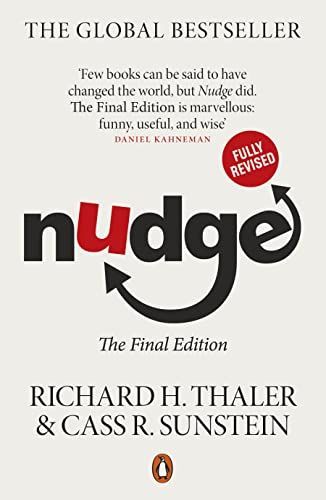
Nudge Improving Decisions about Health, Wealth and Happiness, the Final Edition
Nudge has transformed the way individuals, companies and governments look at the world - and in the process has become one of the most important books of the twenty-first century. This completely updated edition offers a wealth of new insights for fans and newcomers alike - about COVID-19, diet, personal finance, retirement savings, medical care, organ donation, and climate change. Every day we make decisions: about the things we buy or the meals we eat; about the investments we make and the time we spend; about our health and that of the planet. Unfortunately, we often choose badly. We are all susceptible to biases that can lead us to make bad decisions that make us poorer, less healthy and less happy. And, as Richard Thaler and Cass Sunstein show, no choice is ever presented to us in a neutral way. But by knowing how people think, we can make it easier for them to choose what is best for themselves, for their families and for society. With brilliant insight and wonderful levity, Thaler and Sunstein demonstrate how best to nudge us in the right directions, without ever restricting our freedom of choice.
Reviews
Alican Sungur@asungur
Timeo Williams@timeowilliams
Faith Ho @faithho
Gavin@gl
Jimmy Cerone@jrcii
Nick Gracilla@ngracilla
Felipe Saldarriaga @felipesaldata
Nelson Zagalo@nzagalo
Dana Kraft@dkatx
Joshua Line@fictionjunky
Ilia Markov@ilia
Kebo@kebo
Erik Horton@erikhorton
Matt@mattmasonfunk
David Bielenberg@bielenberg
Bruno Carvalho@brscarvalho
Sandy@pdxhonzuki
Pratik M@pcmhatre
Rasmus@rasse
Cyrus Yochim@cyrusy1994
Mark@exort
michele pozzani@pzzmhl
Dani@parallelselves
Anton@tonyv
Highlights
Selena Yang@selenayang
Selena Yang@selenayang
Selena Yang@selenayang